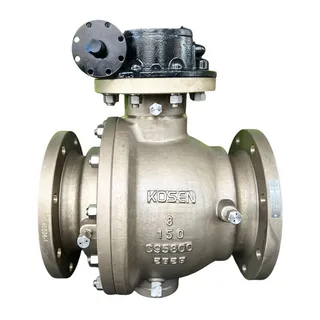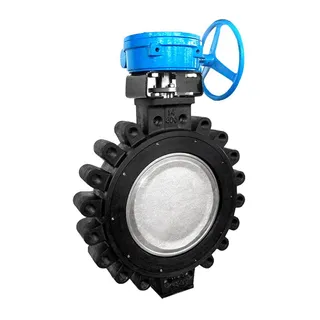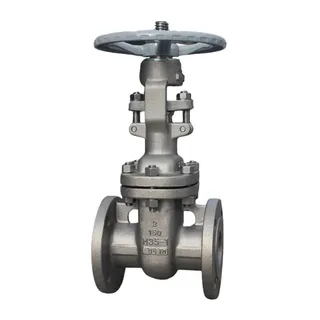In industrial production, steam traps play a crucial role. They can effectively "block steam and discharge condensate," ensuring the steam system operates efficiently and safely. However, during use, steam traps inevitably experience various failures, which not only affect the normal operation of equipment but also lead to energy waste and safety hazards. This article will provide a detailed analysis of the common types, causes, and solutions of steam trap failures, along with practical maintenance suggestions to help you better manage and maintain steam traps and ensure stable system operation.
Next, we will discuss in detail the common failure types that may occur during the operation of steam traps, to facilitate better troubleshooting and maintenance work.
Blockage is one of the most common failures of steam traps. When the trap cannot open normally, steam and condensate cannot be discharged, causing a large amount of condensate to accumulate inside the equipment, seriously affecting its normal operation. The causes of blockage are various; it may be due to damage to internal components of the trap, improper model selection, steam locking, or air binding. In closed condensate systems, such faults are often not easily detected, and operators usually open the bypass valve for temporary handling, making the issue more concealed. In open systems, the phenomenon of direct discharge is relatively easier to detect.
Continuous discharge refers to the situation where the valve disc and seat of the steam trap cannot close and remain in an open state, causing condensate and steam to continue to discharge outward. This failure not only makes the trap lose its function of "blocking steam and discharging water" but also causes a large amount of steam waste, reducing the energy efficiency of the system. The causes of continuous discharge may lie in the trap components themselves, improper model selection, or unreasonable installation, such as incorrect installation orientation. In addition, when the mechanical mechanism of the trap is stuck, continuous discharge may also occur.
Partial leakage is the most difficult failure type to detect and handle. This type of failure usually increases gradually and is more concealed. Partial leakage of a steam trap is manifested by steam leakage while the trap appears to operate normally. It is important not to mistake the flashing of condensate for leakage. Condensate flashing occurs when condensate temperature is higher than the saturation temperature corresponding to the atmospheric pressure at the trap outlet, and part of the condensate turns into secondary steam—this is a normal phenomenon. Leakage, however, can take many forms, mainly including: the valve disc and seat cannot close tightly; the trap operates frequently, producing unnecessary false cycles; loss of internal water seal; damage to the built-in air vent device; gasket damage; or sand holes, erosion, or leakage on the valve body.
In addition to the above three main failure types, steam traps may also experience the following problems during use:
Water leakage in the closed state, possibly caused by damaged or loose seals.
Accumulation of dirt or impurities inside, leading to improper valve operation, poor drainage, or stagnation.
Internal parts wear or damage, causing unstable operation.
Pressure leakage during operation, leading to unstable or excessive discharge pressure.
Internal scaling after long-term use, affecting normal valve operation.
Corrosion or damage to the surface coating due to non-corrosion-resistant materials, reducing corrosion resistance and affecting service life and performance.
Abnormal noise during operation, possibly caused by loose, worn, or damaged parts.
The causes of steam trap failures are diverse, generally categorized into the following major aspects: inherent equipment quality issues, improper selection and installation, and natural aging or damage of components.
The mechanical performance of the steam trap itself is a key factor affecting its normal operation. If components such as the valve disc, seat, or gasket are defective, damaged, or worn, failures like blockage, continuous discharge, or partial leakage may occur. In addition, if the mechanical mechanism of the trap is stuck, it will fail to operate properly, leading to malfunction.
Improper selection is one of the common causes of steam trap failure. If the trap model does not match the actual working conditions—for example, if the selection is too small or too large—it will affect its normal function. An undersized trap cannot meet the drainage demand, while an oversized one may operate too frequently, increasing the risk of failure. Improper installation can also cause a series of issues, such as incorrect installation direction or improper pipeline connections, leading to abnormal internal pressure and affecting proper operation.
Every mechanical device has a service life, and steam traps are no exception. With prolonged use, internal components of the trap gradually wear and age, causing performance degradation. For example, the sealing performance of the valve disc and seat will gradually decline, and the strainer may become clogged with impurities, resulting in various failures.
After understanding the common failure types and causes of steam traps, we will now explore how to effectively troubleshoot and resolve these failures. Timely detection and handling not only improve system efficiency but also prevent energy waste and safety risks caused by equipment failure.
Check internal components: First, inspect the valve disc, seat, strainer, and other internal parts for damage or blockage. If parts are damaged, replace them promptly; if the strainer is clogged, clean it.
Check selection and installation: Confirm that the trap model matches the actual working conditions. If the model is unsuitable, select a proper one. Also, verify correct installation, including orientation and piping. If installation issues are found, reinstall properly.
Check system pressure: Inspect whether the steam pipeline pressure is normal. If system pressure is too high or too low, the trap may not function correctly. Adjust system pressure or replace the trap if necessary.
Perform regular cleaning and maintenance: Clean and maintain the trap regularly to prevent impurity buildup. A comprehensive inspection and cleaning every quarter is recommended to keep the interior clean and unobstructed.
Check valve disc and seat: Inspect for damage or wear. If either is damaged, replace it immediately. Also, ensure the valve disc and seat seal tightly.
Check selection and installation: Confirm that the trap type is correct. Improper selection may cause the disc and seat not to close properly. Check installation orientation; if incorrect, reinstall the trap.
Check mechanical mechanism: Examine whether the trap's mechanical mechanism is jammed. If stuck, clean or repair it to restore normal movement.
Install check valves: If fresh steam blows through the trap, install check valves on the steam inlet and outlet sides to stabilize pressure and prevent continuous discharge.
Check valve disc and seat: Inspect for wear or damage. If they cannot close tightly, replace them promptly. Check the internal water seal; if it has failed, repair it.
Check air vent device: Inspect whether the built-in air vent device is damaged. A malfunctioning air vent can cause steam leakage and should be replaced immediately.
Check gasket and valve body: Examine gaskets for damage and valve body for sand holes or erosion leaks. Replace or repair any defective parts.
Perform regular inspection and maintenance: Regularly check and maintain the trap to identify and fix potential leakage problems in time. Monthly inspections are recommended to ensure proper operation.
Water leakage: If water leaks when the trap is closed, check whether the sealing components are damaged or loose. Replace damaged seals or tighten loose ones.
Internal scaling: Clean the interior of the trap regularly to prevent dirt and debris buildup. A thorough cleaning every six months is recommended.
Component wear: Check internal parts regularly and replace any that are worn or damaged. Quarterly inspections are recommended.
Pressure leakage: Check whether the operating pressure is normal. If pressure leakage occurs, inspect the sealing performance and repair or replace defective parts.
Corrosion: Use traps made of corrosion-resistant materials and regularly inspect the surface coating. If the coating is damaged, repair it immediately to prevent worsening corrosion.
Abnormal noise: Inspect for loose, worn, or damaged internal parts. Tighten loose parts and replace any that are damaged or excessively worn.
Steam traps play an essential role in industrial production, and their proper operation is crucial for system efficiency and safety. Understanding the common failure types, causes, and solutions of steam traps helps us better manage and maintain them. Regular inspection and maintenance, optimized system design, and operator training are effective measures to ensure long-term stable operation. Through scientific and rational management and maintenance, we can minimize trap failures, improve production efficiency, reduce energy waste, and ensure smooth industrial operations.
The maintenance and management of steam traps is a long-term and meticulous task that requires continuous learning and experience. It is hoped that this article provides useful reference and assistance, helping you manage and maintain steam traps more effectively.



